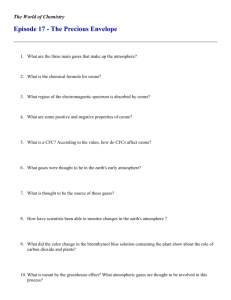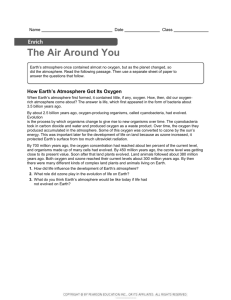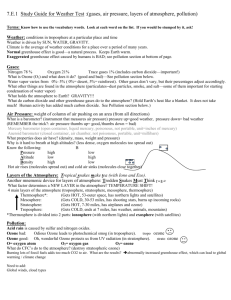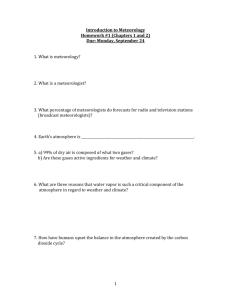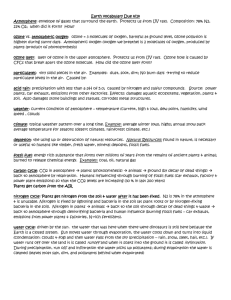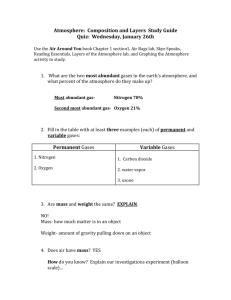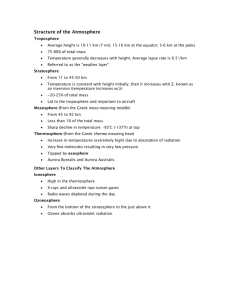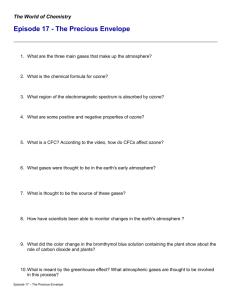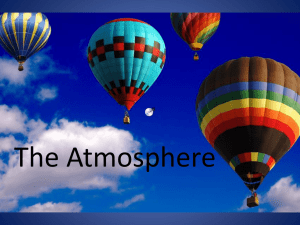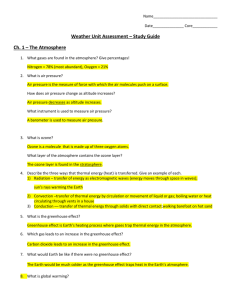The Atmosphere: Climate Change, and Ozone Depletion
advertisement
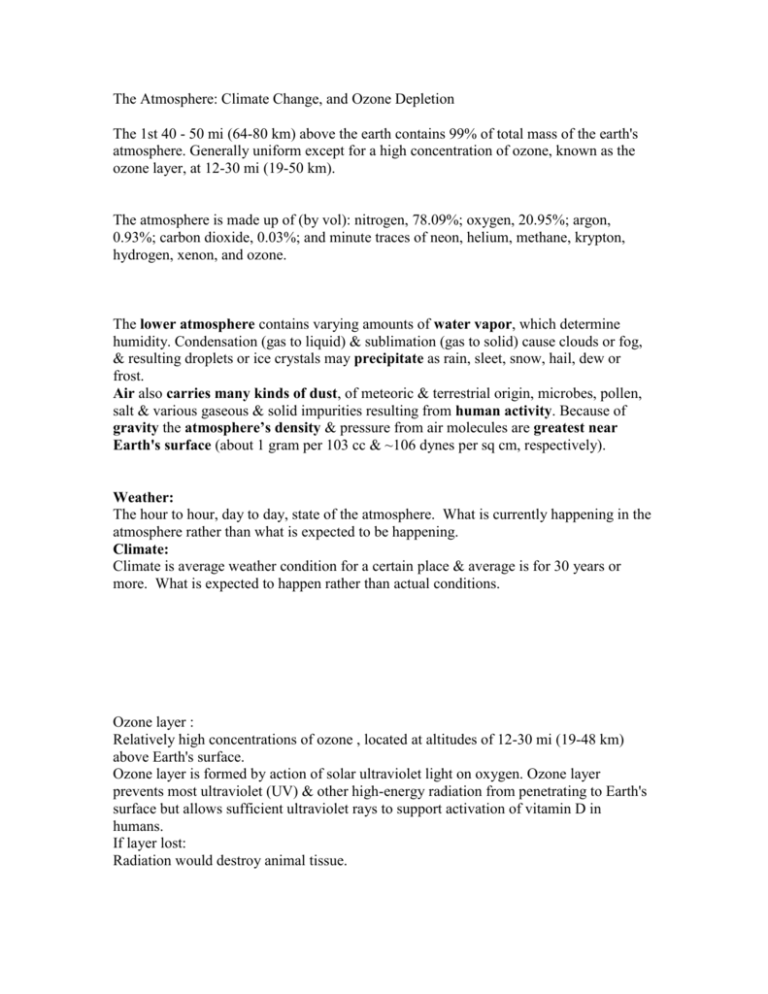
The Atmosphere: Climate Change, and Ozone Depletion The 1st 40 - 50 mi (64-80 km) above the earth contains 99% of total mass of the earth's atmosphere. Generally uniform except for a high concentration of ozone, known as the ozone layer, at 12-30 mi (19-50 km). The atmosphere is made up of (by vol): nitrogen, 78.09%; oxygen, 20.95%; argon, 0.93%; carbon dioxide, 0.03%; and minute traces of neon, helium, methane, krypton, hydrogen, xenon, and ozone. The lower atmosphere contains varying amounts of water vapor, which determine humidity. Condensation (gas to liquid) & sublimation (gas to solid) cause clouds or fog, & resulting droplets or ice crystals may precipitate as rain, sleet, snow, hail, dew or frost. Air also carries many kinds of dust, of meteoric & terrestrial origin, microbes, pollen, salt & various gaseous & solid impurities resulting from human activity. Because of gravity the atmosphere’s density & pressure from air molecules are greatest near Earth's surface (about 1 gram per 103 cc & ~106 dynes per sq cm, respectively). Weather: The hour to hour, day to day, state of the atmosphere. What is currently happening in the atmosphere rather than what is expected to be happening. Climate: Climate is average weather condition for a certain place & average is for 30 years or more. What is expected to happen rather than actual conditions. Ozone layer : Relatively high concentrations of ozone , located at altitudes of 12-30 mi (19-48 km) above Earth's surface. Ozone layer is formed by action of solar ultraviolet light on oxygen. Ozone layer prevents most ultraviolet (UV) & other high-energy radiation from penetrating to Earth's surface but allows sufficient ultraviolet rays to support activation of vitamin D in humans. If layer lost: Radiation would destroy animal tissue. Higher radiation levels linked with increased skin cancers, cataracts & decline of amphibian species. 1974: scientists warned that certain industrial chemicals could migrate to stratosphere react with sunlight and deplete upper-atmospheric ozone layer. A seasonal decrease, or hole, discovered in 1985 above Antarctica was 1st confirmation of thinning layer. What are greenhouse gases? Many chemicals in the atmosphere behave as 'greenhouse gases'. These gases allow direct sunlight (relative shortwave energy) to reach Earth's surface unimpeded. As shortwave energy (light) heats the surface, longer-wave (infrared) energy (heat) is reradiated to the atmosphere. Greenhouse gases absorb this energy, allowing less heat to escape back to space, & 'trapping' it in the lower atmosphere. From US EPA (2002) What we know about global warming Trends - Data on a wide variety of environmental indicators are consistent with the consequences that scientists generally expect to result from increasing concentrations of greenhouse gases. Temperature - Global temperatures are rising. Observations collected over the last century indicate average land surface temperature has risen 0.45-0.6°C (0.8-1.0°F). Precipitation - Precipitation has increased by about 1 % over world's continents in last century. High latitude areas tend to see more significant increases, while tropical areas see declines. Sea Level - Sea level has risen worldwide ~15-20 cm (6-8”) in last century. ~2-5 cm (12”) of rise has resulted from melting of mountain glaciers. Another 2-7 cm has resulted from expansion of ocean water because of warmer ocean temperatures.


